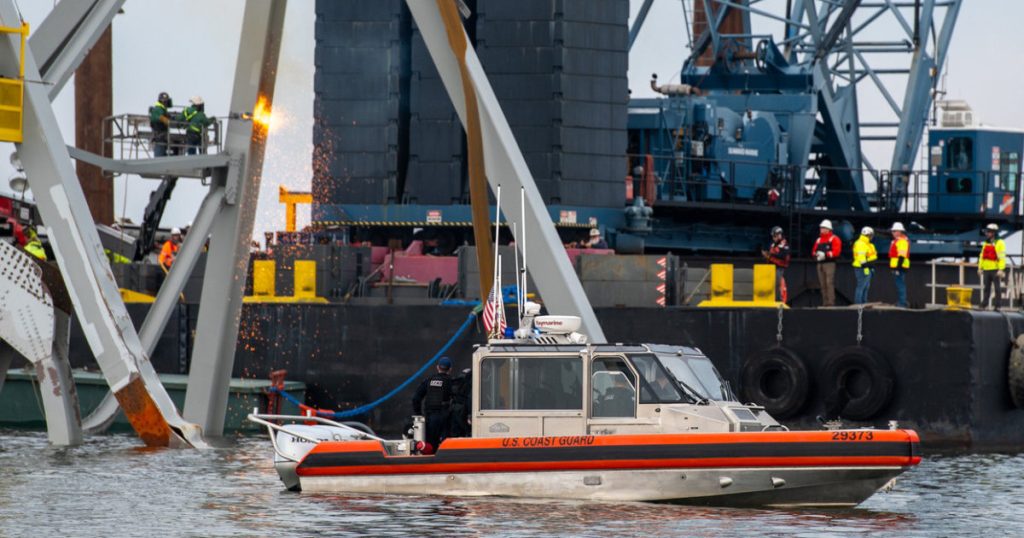Teams of engineers in Baltimore are working on the challenging task of cutting and lifting the collapsed Francis Scott Key Bridge, which fell into the Patapsco River after a cargo ship crashed into one of its supports. Sparks and cutting torches can be seen as crews carefully measure, cut, and lift the twisted steel from the broken bridge. A variety of equipment, including floating cranes, tugboats, and barges are being used to remove the debris and reopen the ship channel and the blocked Port of Baltimore, in a complex and time-consuming process.
Maryland Governor Wes Moore emphasized the importance of the first movements in removing the wreckage and restoring normal operations. The removal of the collapsed bridge sections is crucial in order to open up a smaller auxiliary ship channel, stabilize the site for divers to continue searching for missing workers, and free up the port for shipping activities. The crew of the cargo ship involved is safe and cooperating with authorities, and investigations to determine the cause of the accident are ongoing, with no immediate signs of environmental pollution from the crash.
The impact of the bridge collapse extends beyond the immediate removal and recovery efforts. Officials are now working on plans to rebuild the bridge and address the economic repercussions of the closure of a major port entry point and highway link. The bridge was a critical component of the transportation infrastructure in Baltimore, carrying Interstate 695 around the city. Maryland transportation officials are considering innovative designs and materials for the bridge reconstruction project, which has been expedited with $60 million in immediate federal aid approved by President Joe Biden’s administration.
The closure of the Port of Baltimore, a key hub for shipping in the region, has disrupted shipping activities and impacted thousands of workers and commuters who rely on the port’s operations. The loss of the bridge has also caused delays in shipping, which are likely to affect U.S. consumers who rely on the port for goods such as cars and farm equipment. The full cost of rebuilding the bridge will be covered by the federal government, with the focus on speeding up the reconstruction process to minimize the economic impact on the region.
Despite the challenges and complexities involved in the removal and reconstruction efforts, the community in Baltimore has come together to support the recovery process. Residents, like Randy Lichtenberg, have gathered to witness the efforts of the crews and express their solidarity with the workers involved in the challenging task of removing the twisted steel from the river. As the investigation continues and efforts to restore the port and bridge progress, the resilience and determination of the city of Baltimore are evident in the face of this unexpected disaster.


